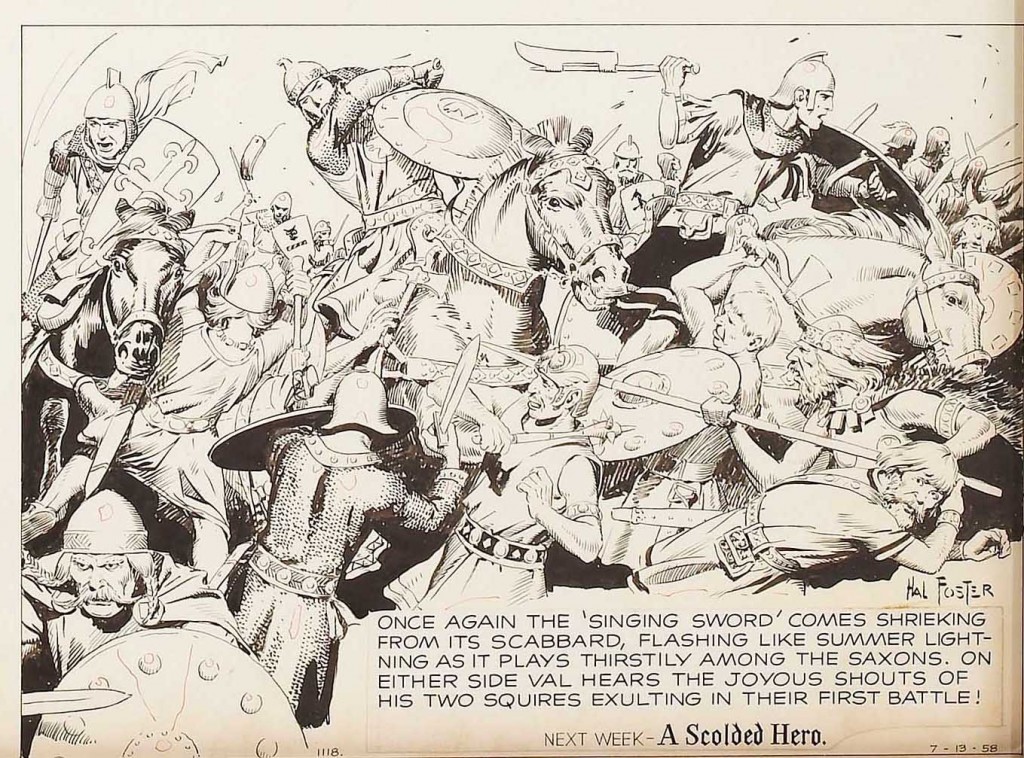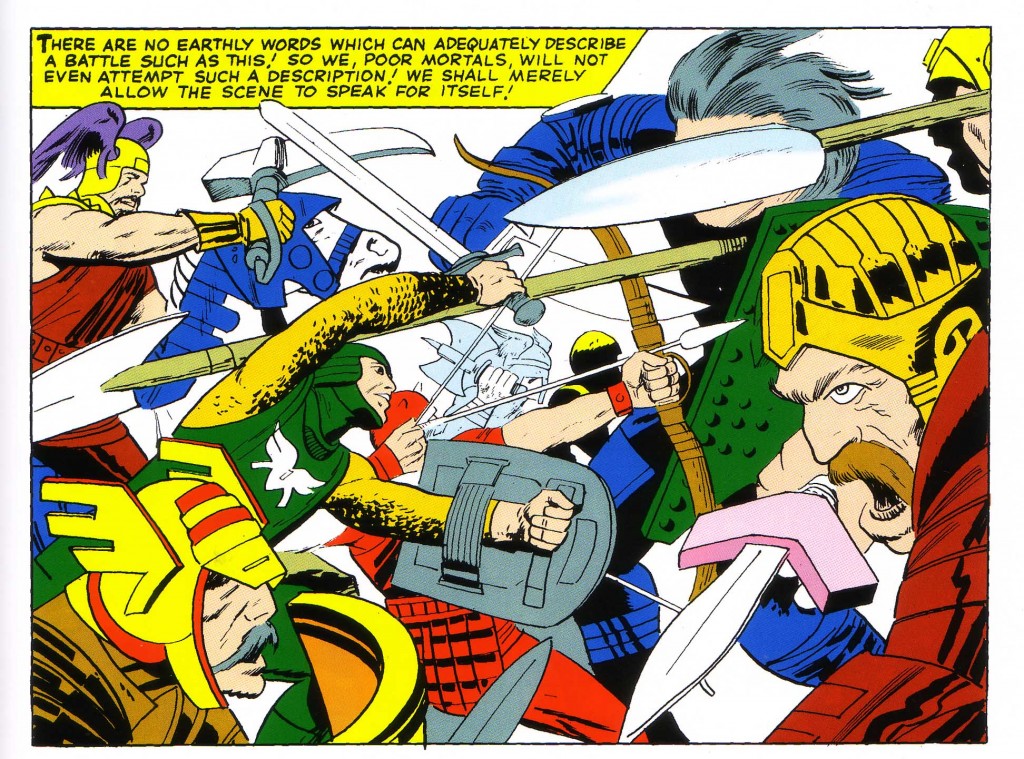After more than a dozen issues, Jack Kirby and Stan Lee began to give us a back-story to The Mighty Thor in their Tales of Asgard series, beginning in Journey Into Mystery #97. Up to that point, Thor had been pitted against fairly common foes, such as Communist warlords and gangsters, with the occasional appearance of his arch nemesis, Loki. With the inception of Tales of Asgard, Thor, Loki, their father Odin and a vast pantheon of Norse gods and goddesses would emerge. Initially, Kirby’s pencils on the series were embellished by whatever artist was currently assigned to ink him, but starting with Journey Into Mystery #106, the job was given to Vince Colletta.
This particular inker has rightfully taken a good deal of flak for not only erasing portions of Kirby’s pencils, but also rushing through his work and employing hack assistants to complete work on tight deadlines. In the case of his work on Tales of Asgard, Colletta’s style fit Kirby’s work and the flavor of the series to a T. Scanning this full-page panorama from Journey Into Mystery #121, one sees the brilliant compositional mind of Kirby at work once again. 
The block of text on the left brings the eye to the curved shape of the observation tower and the figure hanging from it. The eye then moves down the support beam to the massive, majestic suspended warrior taking up the lower left quarter of the page, but the diagonal near his knee draws the eye back upward to the right, where it encounters another curved shape which brings us back to the relatively small figure of Thor. What is amazing is that despite all the action on the page, because of multiple visual cues we always end up with Thor as the focal point.
Looking at this drawing, I cannot help but think of Hal Foster, an artist that Kirby has mentioned as one of his main influences. Foster’s Tarzan comic strip revolutionized the use of the dynamic figure, and was used as a model for scores of artists to polish their anatomical drawing skills. However, it was the creator/artist’s full page Prince Valiant Sunday strip beginning in 1937 that Kirby was channeling in his treatment of Tales of Asgard.
At first glance, in comparison to Kirby, Foster’s work may seem a trifle precious, in the sense of being overly refined, but beneath the surface there is a robustness to be found. There is also a strong sense of composition in Foster’s use of figures in deep space that Kirby would have certainly appreciated. What is most striking is the beauty of the archaic world that Foster has conjured with his incredible attention to detail. In Prince Valiant, Foster took great liberties with the contrasting cultures that surrounded his hero, combining various periods of English history to invent his own version of the age of King Arthur. It is this atmosphere of the mixture of medieval British nobility and chivalry, combined with the rough hewn cultures of Vikings and Saxons that Kirby adapts for his Tales of Asgard, and which Lee further embellishes with faux Shakespearean dialog.
We see in this panel drawn by Foster that as with Kirby’s work, there is a great deal of complexity in the relationship of the figures to one another. 
We can easily recognize the Big O here. The viewer’s eye enters the panel on the left with the first horseman. His scarf and shield bring us to the second warrior, whose raised arm points us to the third soldier’s battle ax. His curved shield brings us further rightward and down to the horse’s nose and then around to the wing helmeted Norseman with the lance that, points us back left to the central foot soldiers to complete the circle.
It is difficult to know whether it was Foster’s influence that pointed Kirby in this direction, but we can clearly see similarities in the King’s approach to scenes involving figures in deep space compositions.
In this panel below from Journey Into Mystery #112, we see a wonderfully complex interplay of foreground and background figures locked in battle. 
We first notice the warrior on the left wielding an beak shaped ax, which leads our eye rightward to the arm of the gray haired swordsman. We follow the curve of his shoulders to the gold helmeted figure, where the triangular hilt guard on his dagger moves our eye to the shield of the chain mailed figure and further right to the wing helmeted head in profile on the left. It is this sort of complex and interwoven melee that Foster and Kirby are both masters of.
Again, there are clear stylistic differences between the work of Jack Kirby and Hal Foster, but we can clearly see here that the King has borrowed from his elder both in technique and historical flavor.
Image 1- Journey Into Mystery #121, Jack Kirby, Stan Lee, Vince Colletta
Image 2- Prince Valiant page, July 13, 1958
Image 3- Journey Into Mystery #112, Jack Kirby, Stan Lee, Vince Colletta from Thor Masterworks

